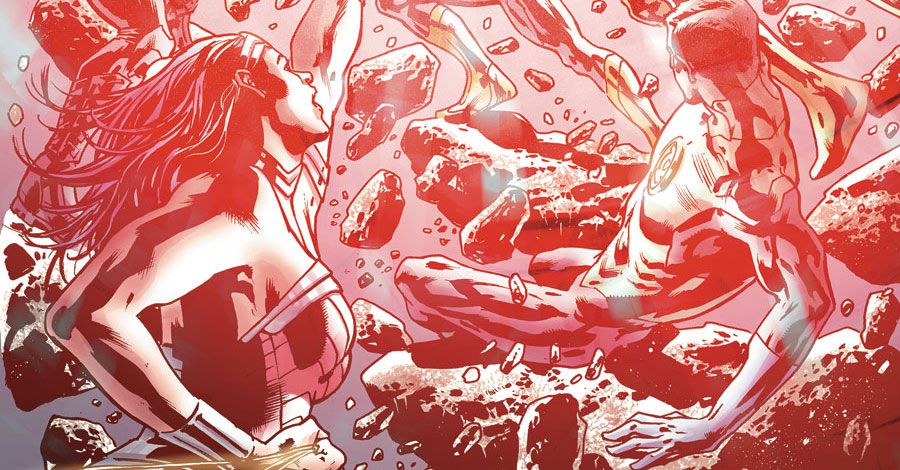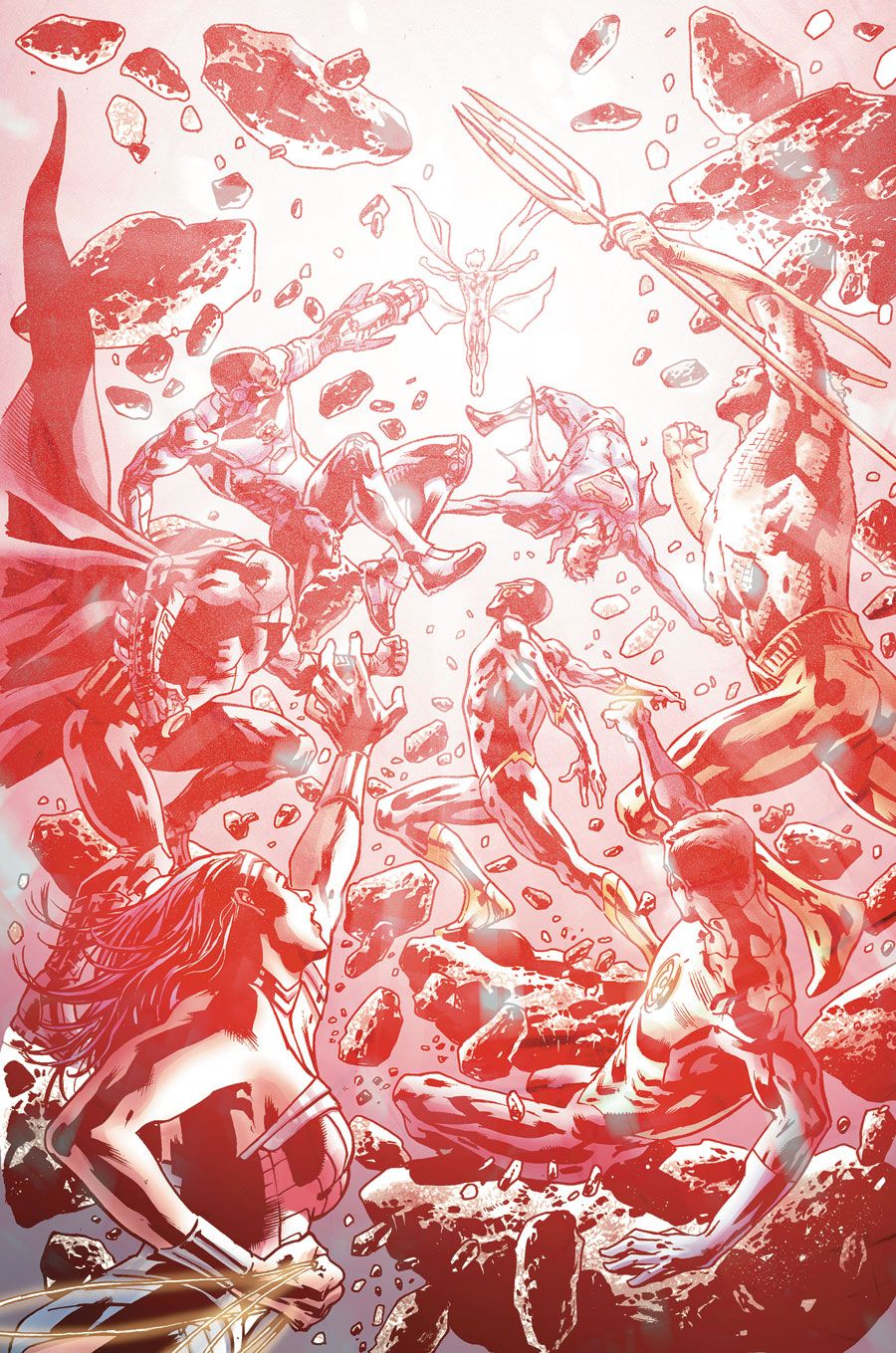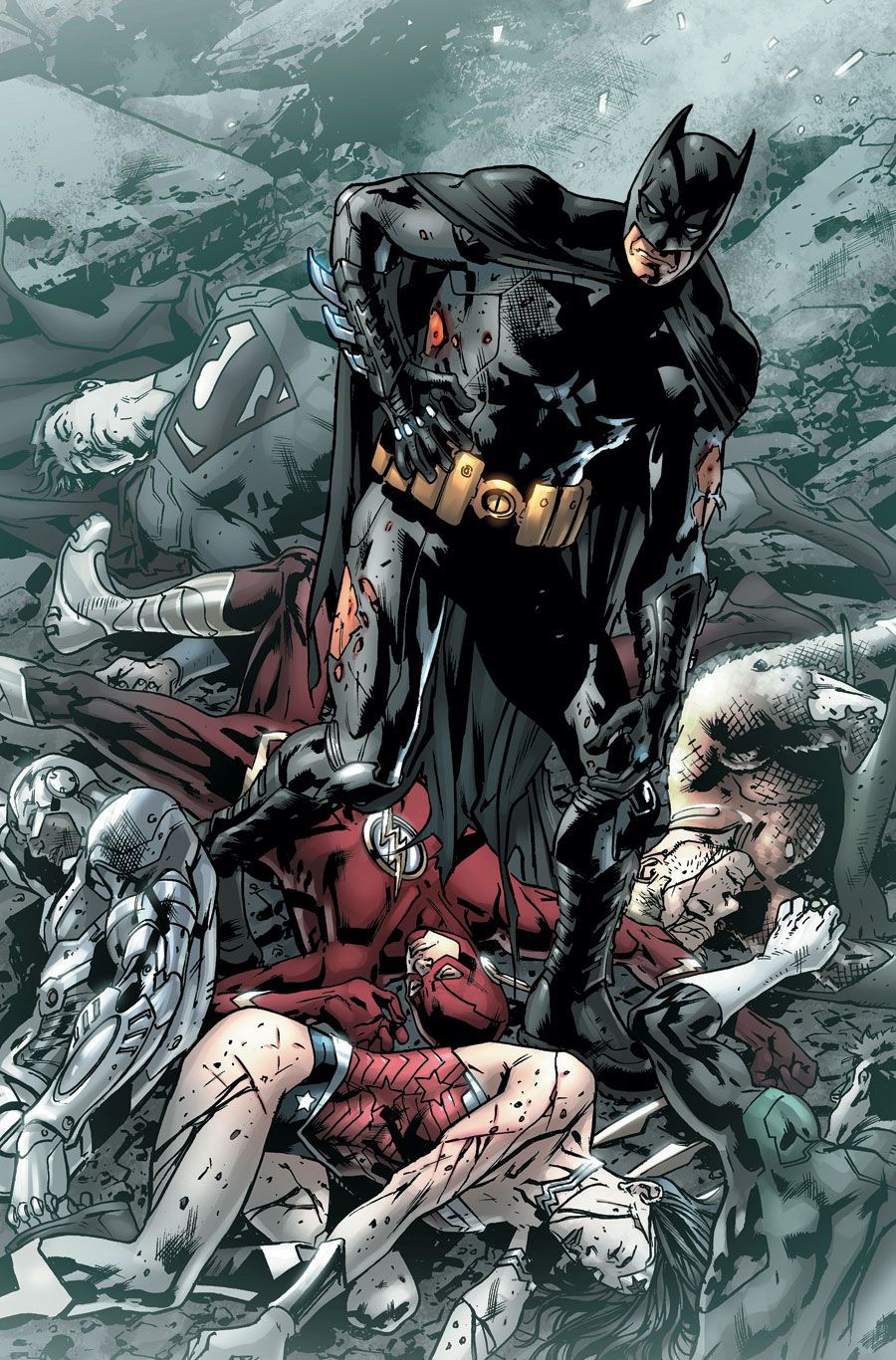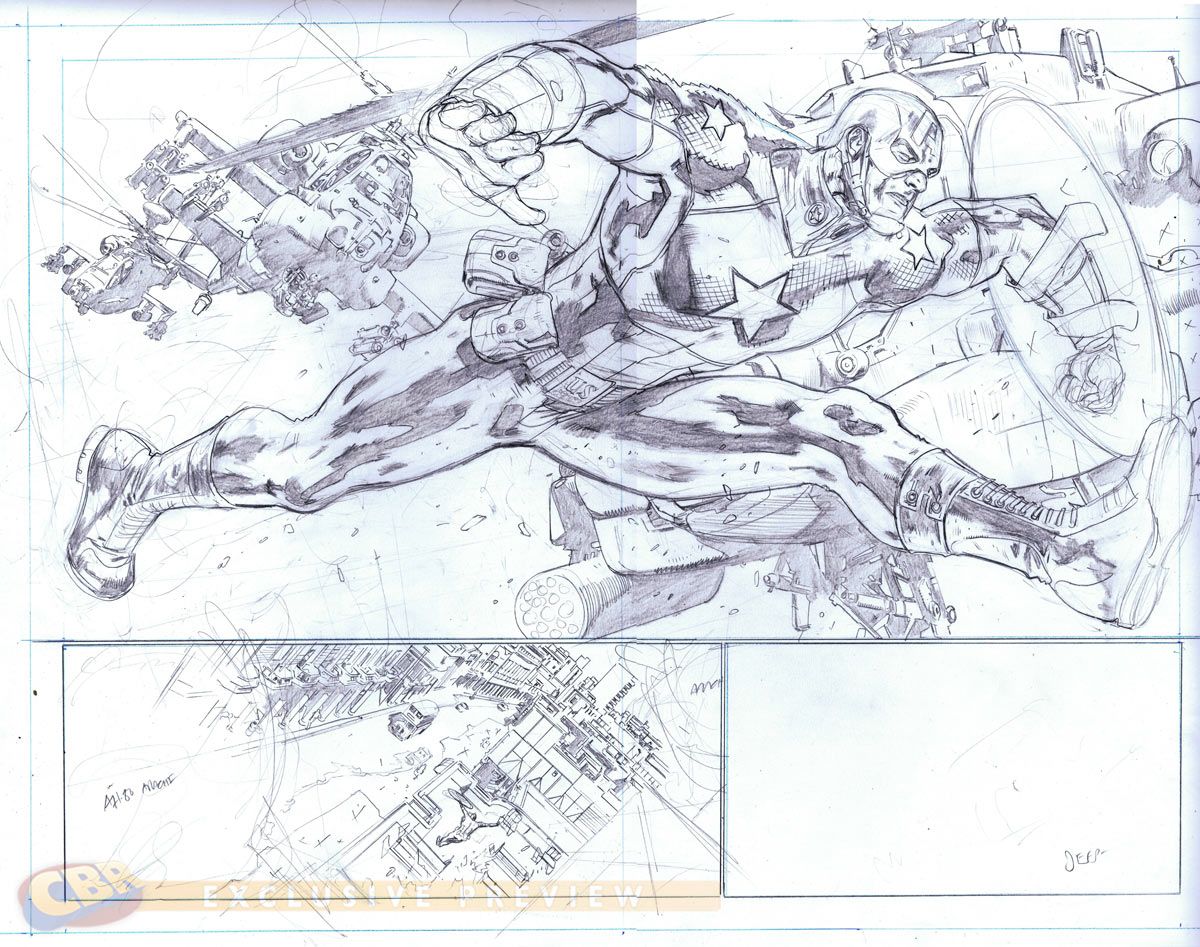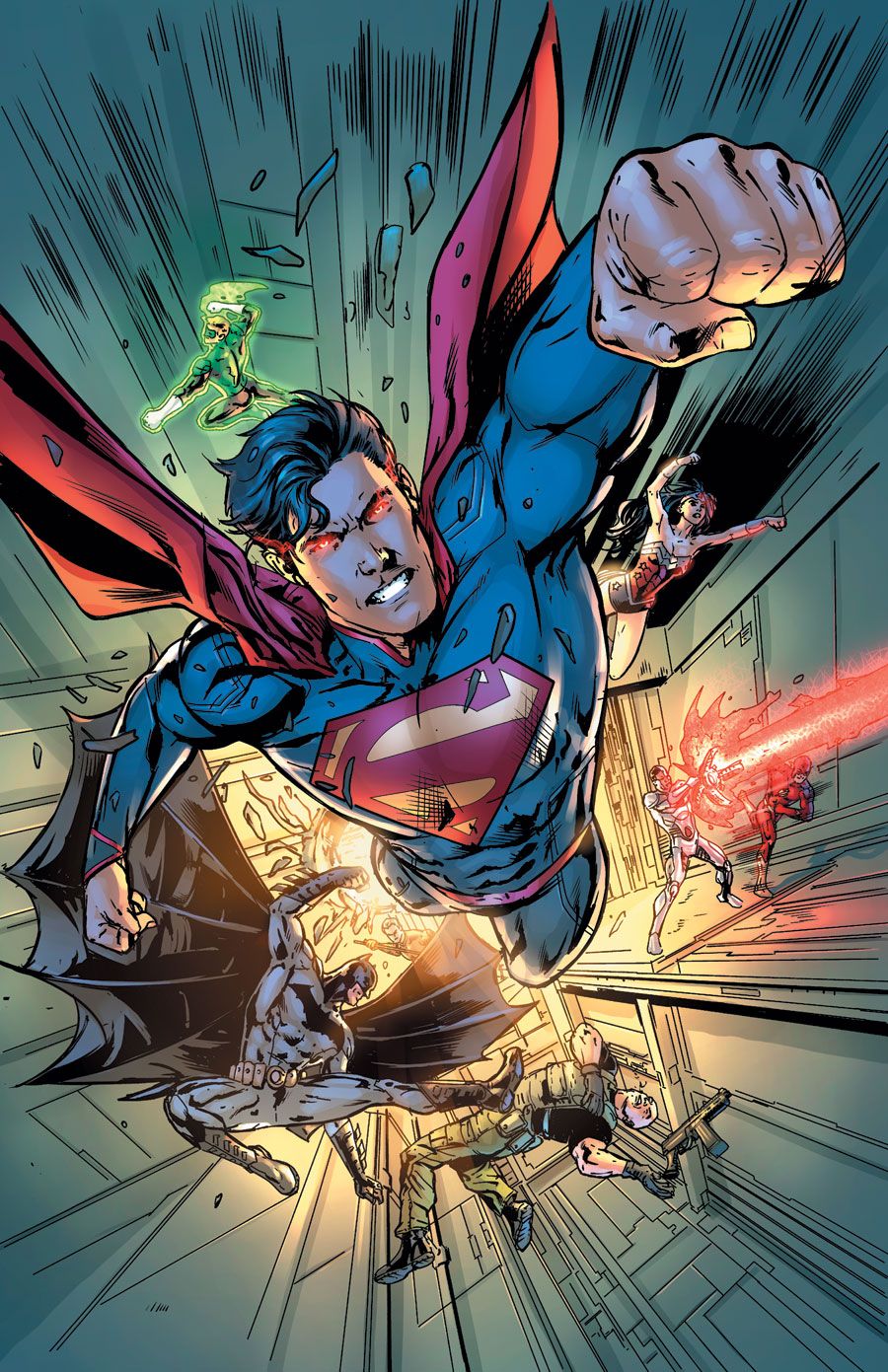In the first part of our most interview with Bryan Hitch, conducted last month at DC Comics' headquarters in Burbank, the artist and writer shared his enthusiasm for his "Justice League of America" run, which turned his focus away -- though not completely -- from creator-owned comics and towards some of the most famous superheroes on Earth: Superman, Batman, Wonder Woman, Green Lantern, The Flash, Cyborg and Aquaman.
Today, Hitch provides more specific insight into the opening arc of his "Justice League of America," and the threat presented by the godlike Rao. Hitch's "Justice League of America" run -- joined by inker Daniel Henriques, colorist Alex Sinclair and letter Chris Eliopoulos -- launched in June, and though fans may view it as only his second writing work after his Image series "Real Heroes," the creator tells CBR that isn't the case. In fact, he's been writing for as long as he's been drawing.
RELATED: Hitch Explains Why "Justice League of America" Is His "Dream Job"
Hitch also discusses whether the "Justice League of America" roster may grow under his watch, and the artist of conspicuously consequential stories, including "The Authority" and "The Ultimates," promises the current "Justice League of America" arc will wrap with something "on a scale I've never attempted before."
CBR News: Are you looking to broaden your "JLA" cast out a little bit more beyond the icons, or are you sticking with the big names?
Bryan Hitch: At the moment, it feels like I will stick with the big names, but you may need a mission specialist occasionally. The problem is, once you start expanding outwards, it becomes "Crisis on Infinite Earths" every month. There's nothing wrong with that, I love that level of storytelling, [but] giving everybody a good arc in every story, and a useful purpose in every story, and the action scenes, is a space hog. It takes up a lot of room. If you start expanding the cast, you're going to have the same problem -- your issues will go from six per arc to eight per arc, because you've got to allow for the space everybody needs to inhabit that story. It can't just be a couple of panels, otherwise you're not doing a new character any kind of service whatsoever.
As much as I'd love to bring in some of the '70s favorites of mine, like Red Tornado, and Firestorm, all that stuff -- this is the book about Superman, Batman, Wonder Woman, Flash, Green Lantern, Cyborg, Aquaman. I think seven's enough.
Let's talk more about the first arc, and the new character, Rao, who serves as antagonist. How did all of that came together for you? What was the genesis behind this storyline?
Honestly, the idea just came out of nowhere. Once you start thinking about, "What can a Kryptonian do," then think, "What can a Kryptonian god do," that's an interesting line in itself. But then thinking about a story around that, and what would Rao be, what would he be like, what actually is his personal story that leads him to where he is on Earth? Part of it was to create an antagonist that isn't necessarily a pure "bad guy." In fact, the people of the planet can identify with him, actually like what he's doing, and embrace what he's doing, and there's a tipping point where the JLA have to step in.
But at the same time, maybe the people on Earth aren't happy that he's gone -- they might actually wish the JLA hadn't interfered. And that's an interesting change, as well. You're talking about somebody who's coming and fixing real-world problems, like poverty, and hunger, and inequality. If the entire world is combined in unity -- which is always the ideal of religion, isn't it? If Everybody believes in the same thing, then they'll stop fighting over what they don't believe. Having that idea, about a religious figure as a bad guy, it means you can also look at social things. Even with a line of dialogue, it doesn't have to be very heavy-handed, but the ideas of organized religion, and faith-based conflicts, and people arguing over their right to believe in anything, versus the historical record that shows the conflicts that have been waged over who believes in what, even today. That gives an interesting twist to the good guy vs. bad guy thing.
Plus, [I'm] dealing with a character who has to be able to work on a worldwide -- or bigger -- scale that needs all of the team. One thing I was very keen on, is not doing the "clubhouse" Justice League. I don't want a clubhouse, I don't want a gathering place. I know they have Watchtowers and satellites, but I actually wanted to stay away from that, and not have this group be together, having a meeting when a threat comes in, and they all go off and fight it together. What I wanted was a threat that can arise across the world, or more, that brings each of the characters in, so there's kind of a natural entry point for all of the characters into elements of the story, and that brings them together as a team -- not because they're the social group "Justice League."
With a book like this, it can be easy to go very big, and almost unrelatable, because the characters are so big, and the situations are so big. But so far, it seems like you're making a conscious effort to avoid that. There are some lighter moments, and you get a glimpse of the human side and personal side. How important is that balance, to not make everything big explosions, but to keep things on at least a somewhat relatable and personal level?
It's like anything -- music for instance. You don't have 40 minutes of just being thumped at with bass drum beats. Music has its ebbs and flows. It's quiet, it builds. Stories have to have the same thing. If I just did six issues of colossal fight scenes, it would be like you're being yelled at for six issues. You become immune to it. You would actually find that there's no powerful moments, because there's no escalation to those things.
And we're people. If you can find the "people" level first, and build out from that to the "awesome" level, then I think you're going to have a much more empathetic audience. You're going to have people getting excited, because it's building to a crescendo. But if it's just chunking planet-sized chunks at the Justice League for them to punch all the time, I think that would get boring for people to read very quickly. It would be fun to draw, [Laughs] The quiet scenes are always the harder ones for an artist to nail, because you have to have people acting and being natural, and still make it visually interesting -- still move the camera around, and still make the scenes engaging, and not just have heads in panels with dialogue next to them. And I like drawing that stuff, anyway. I like the real world aspect -- putting the fantastic into the real world, I really enjoy. Which is why I set it in New York mostly, rather than Metropolis or Gotham. They're in there, but I wanted a central point -- New York is a good one to choose for superhero comics.
How do you view your evolution as a writer? You've been such a well-known comics artist for so many years, and recently you wrote and drew "Real Heroes" at Image Comics, which was a subversive take on iconic superheroes and that imagery. To go from that to writing the actual icons had to be an experience -- what has that process and journey been like for you?
Because I'm now being published as a writer, the assumption is always I just started writing, but I've been writing for as long as I've been drawing, really. The intention when I started this job 28-odd years ago was always to write and draw -- I just want to tell stories. I learned to draw better to tell stories, but it's always the storytelling -- not covers, not pinups -- and drawing the images that the story needs, not the things you want to draw. As cool as it would be drawing Superman flying over a city in a big shot, if the story doesn't need it, you don't draw it.
I had a lot of input with a lot of things I've been working on, but you don't get credited as a writer. Often, the buying public and many reviews assume that if you've drawn it, you've been told to draw it by the writer. And that just isn't how it works. Mark Millar can tell everybody that "Ultimates" was 75 percent me, 25 percent him, but nobody believes it. This is an evolution that started 20 years ago. It's not something that started two years ago. It's just that it's reached that point.
I wrote a six-issue ["Ultimate Captain America"] series for Marvel -- I kind of got moved onto "Age of Ultron," but what I was actually going to be doing was a new "Ultimate Cap" series, which for me was going to be as much "Ultimates 3" -- the whole cast was in it, it was a huge scale story, but also dealt with Cap's World War II stuff. It got kind of shelved, because they wanted to go on to "Age of Ultron."
RELATED: Hitch Talks "Age of Ultron," "America's Got Powers" & Ultimate Captain America"
It's not something entirely new -- the evolution started a long, long time ago, and it just gradually got to the point where I've actually had the chance to sit down and genuinely do the job. Like everything else, it's a learning curve. It's quite a steep curve. Fortunately, I have some very good friends that are very good writers -- I can get some good pointers out of those guys.
I would imagine so! Is there anything you want to tease about what's coming up in "Justice League of America"?
No. I don't do teasing. I'm English, I can't tease. [Laughs]
The scale does get truly enormous. Issue #4 starts to pivot the story, and really, issue #5 is where the escalation truly starts to take hold. There are several things in there I can't wait to get to as an artist. These are some of the key moments I had from day one on this -- something my editor said was one of the coolest Superman action beats he's ever seen. I can't wait to draw that, because I know we haven't seen it before.
And the denouement -- the big, final act -- you haven't seen this before, either. It's not just hyperbole. I've never drawn anything like this, on this scale before.
And you've drawn some big-scale stuff.
Exactly. So when I say this is the biggest stuff I've ever attempted, on a scale I've never attempted before, you kind of believe me, because I have no idea how I'm going to pull some of this stuff off.
It has to be gratifying to be told you're doing something with Superman that's never been seen before, because there are so many thousands of Superman comics from over the decades.
It's a way of using his powers that you maybe haven't seen -- I'm pretty sure nobody's seen this. This isn't something I was going out of my way to achieve; this was a natural moment in the build of the story.
The feedback so far's been fantastic. I'm genuinely delighted at the response publicly and editorially. I'm having such a good time doing it -- my cold dead fingers.
"Justice League of America" #4, the latest issue written and drawn by Bryan Hitch, is on sale Oct. 14 from DC Comics.

